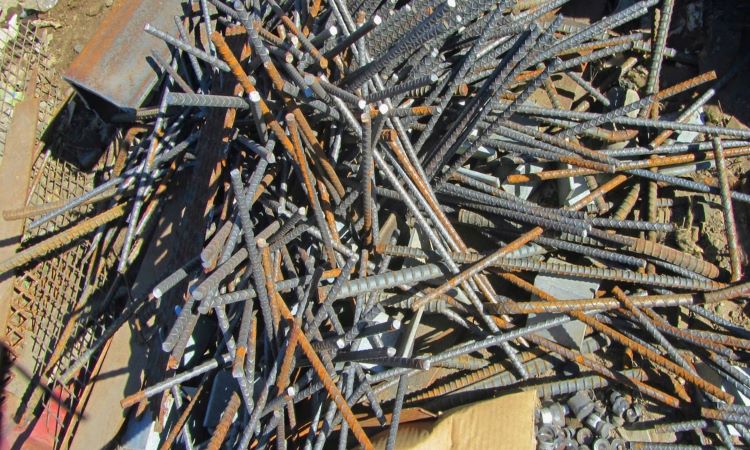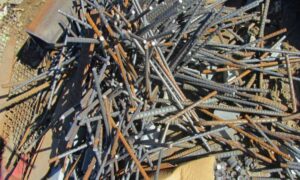Steel is “A type of item” in the construction industry, which means it requires accurate records, and tight control is required while dealing with steel in the construction industry.
Performance of construction project depends on investment involved in the project utilizing direct and indirect, optimum utilization of man, material and types of machinery and profit gained out of the project from the financial point of view.
A steelyard is a lay-down yard where the sequencing of cutting bending and threading of steel is done with a proper tag system. Location of steel yard in the project is also a very curtail analytical part by which indirect cost of transportation can be reduced to optimum extent.
Position of cutting, bending, and threading machine in steel yard along with steel inward and outward yard with stacking arrangement like “first come first out” with diameter wise is impactful for the proper functioning of steel yard.
Wastage In Reinforcement Steel May Also Occur Because of the Following Factors
Wastage of steel is a big factor in any construction project; many do reconciliation of steel received and utilized at the project but fail to show the wastage quantity physically and keep on thinking where that wastage steel has gone and base on assumption make following statements.
• Production of stirrups or rings by the fitter without any proper guidance and in this way excess stirrups are produced.
• Steel may have got stolen from the site.
• Cutting of reinforcement bars by the fitter without considering the wastage.
• Contractor had thrown it inside the filling at plinth level and around the building.
• No records were provided from the site for the use of extra steel.
• Illiterate labor in cutting and bending gang.
The wastage is mainly caused when permissible wastage is 3% and provided steel is overweight over 3% then it is essential to order more steel for completion of the work as wastage will have occurred throughout the cutting of steel caused by the standard length of the bar from which the reinforcement steel will be bent or cut. It is inevitable until you purchase a pre-cut length bar as per the required length.
Tolerances of Mass for Structural Steel as per IS code
In IS: 1786, clause no.7.2.2 (Table No. 2) stated that,
• For up to and including 10mm-⌀bar, which allows +/- 7% deviation from standard weight.
• For Over 10mm-⌀bar up to and including 16mm-⌀bar, which allows +/- 5% deviation from standard weight
• For above 16mm-⌀bar, which allows +/- 3% deviation from standard weight.
For example, if you received a 12 mm-⌀bar lot at the site and if I cut a bar of 1-meter length from it, then its weight should be 0.888 kg/m as per standard specification.
How to Control or Minimize Reinforcement Steel Wastage at any Construction Projects?
In this civil engineering article, we will get details about how to optimize or minimize the wastage of steel based on yard plan, BBS or bar bending schedule, and IS specification. According to standard practice permissible wastage is 3% (1% accountable wastage/Scrap + 2% rod length not over 1.0 m).
Steel Yard utilization is a cost-effective process. The use of ready-to-use bent rebar reduces wastage. Labor cost is minimized as manual bending is not required.
Development of a ”Bar bending” schedule is very important before placing the steel bars since it facilitates minimizing the wastage by up to 98%. So, normally, wastage of steel is 2% of which, 0.5% is unrecoverable & 1.5% is scrap.
As cutting and bending are done with the building center (advance cutter machine), with advancement wastage is reduced to zero.
Reinforcement Bars should be cut and bent only in the quantity specified on Bar Bending Schedule and to achieve this only a specified number of bars are given to the contractor for doing work and each day reconciliation of it to be done before providing him the next number of reinforcement bars necessary for the upcoming stage.
The total quantity of rebar is finalized in the project initiation stage; hence the bulk quantity of the order is placed towards the manufacturer. Hence there is a saving in project costs also.
Advanced machinery used for rebar and cutting, can bend in any shape with precise accuracy, so designers have a free hand for design structure.
Conclusion
This article mainly focused on optimum utilization of steel and steel yard management in the construction industry. Optimum utilization of structural steel or reinforcement is possible with the concept of “Work from whole to part and not from part to whole.”
Through calculating the overall quantity of steel required in the project should be calculated in well advance before starting the project with advanced BBS modeling, sequencing of order quantity of steel, and cutting and bending of steel in the steel yard to reduce or to say nullify wastage of steel in a construction project.
It is advisable to use CPM & PERT network for sequencing of cutting of steel to nullify wastage of steel in the project.


